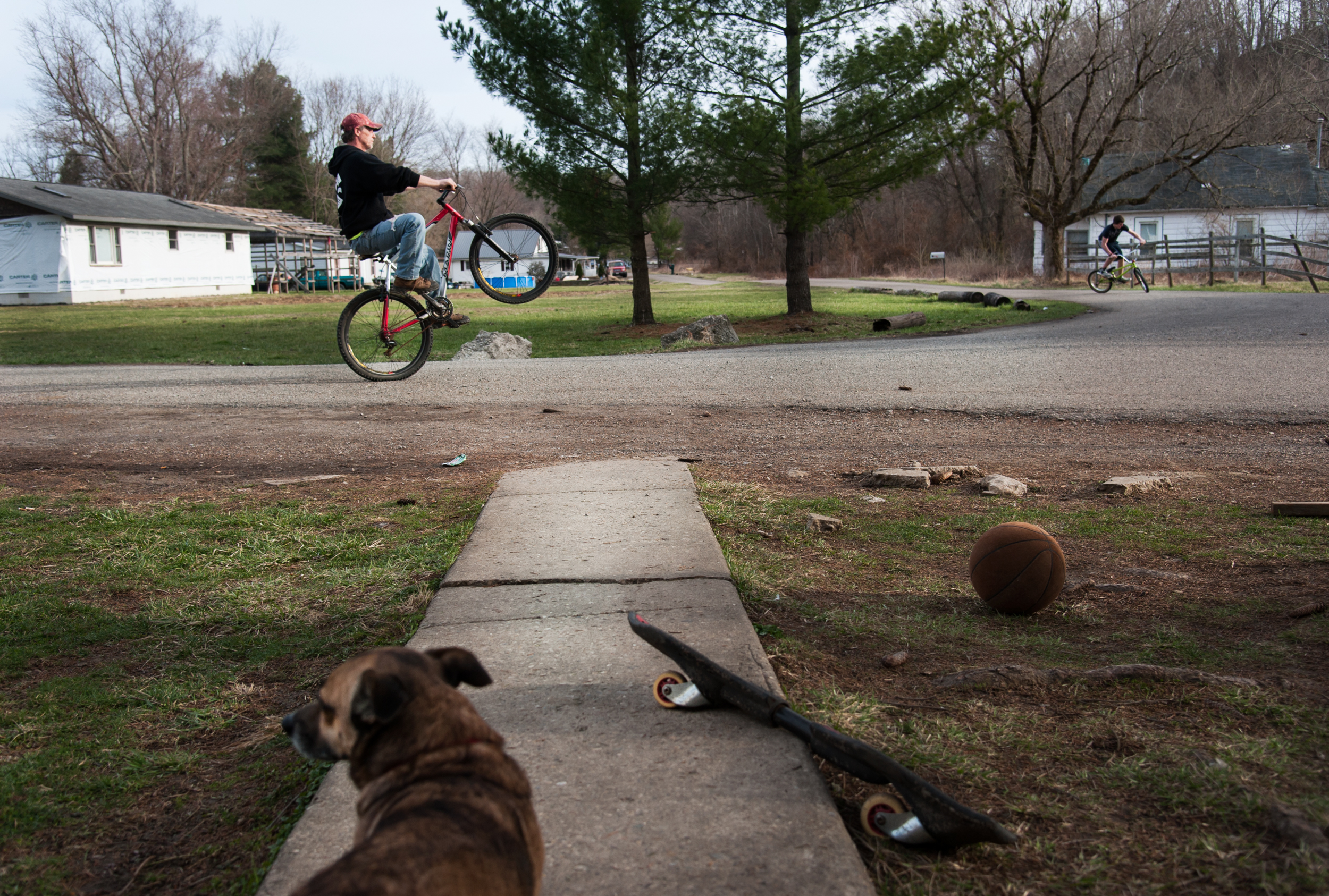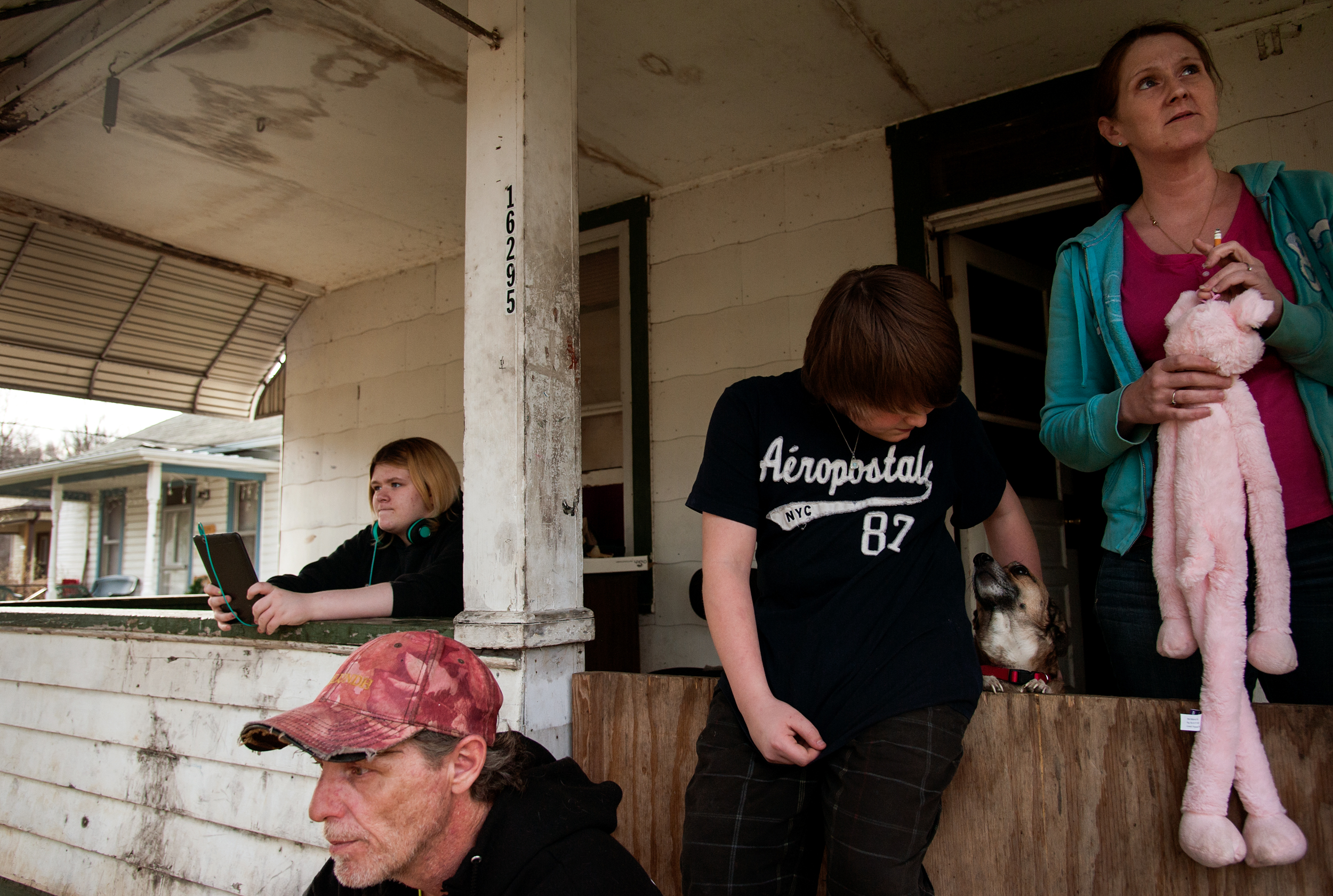In 1930, the small Appalachian town of Millfield, Ohio suffered a devastating blow when a coal mine exploded, killing over 80 men. On Hallowed Ground revisits this town and examines not only the scars that persist almost a century later, but the resilience of the residents who stayed.
In the morning, the streets are silent. The smell of wood smoke fills the air and billows into the sky. As the sun rises, the sounds of birds and roosters stand out against the silence, and if anyone walks down the street or a truck drives by carrying someone to work, the dogs will bark to announce their presence. On the farms, the morning milking has already been taken care of as the sun hits Main Street, rising up behind the church.
As one drives north along Highway 13 just outside of Athens, in Southeast Appalachian Ohio, one could almost miss the turnoff for Millfield. Before the highway was redirected, it used to cut through the center of town, past the church, post office, convenience store, and tavern. Now, however, the highway bypasses the town and Main Street is quieter, only the church and post office are still functioning, but the street is still lined with the same homes that have been there for almost a century—some housing lifelong residents and others full of young families, newcomers, or transients.
At the juncture of the two main roads—Main Street and Millfield Road—stands the old corner store and tavern that was once used to hold the bodies of 82 men who were killed swiftly and tragically in the largest coal mine disaster in Ohio’s history in 1930. In the early part of the century, The Sunday Creek Coal Company Mine No. 6 was the main source of employment and income for many men in Millfield and nearby Chauncey. On one cold November morning in 1930, an explosion in one of the shafts trapped the workers inside and many died within minutes, mostly from carbon monoxide poisoning.
The skeletons of buildings where those men drank beer after their shifts, or went to the movie theater with their families remain—a haunting reminder to a town that suffered a devastating blow and which still bears the scar almost a century later. On the other side of the creek from Main Street, there is a bridge that crosses over Sunday Creek and leads to the other side of town—the area that locals still refer to as company town, or East Millfield. In a town that now only contains approximately 350 people, a division of east and west has strangely and historically been a defining feature, still talked about by the residents.
Millfield is a shell of what it used to be when it was a bustling coal town, but what remains are families that are still tied to the place, to the history and to one another. They share stories of grandparents and great-grandparents and when asked why they’ve stayed, their reply is that they know nothing else, that they love the land and their families. The surrounding hillsides and farmland are green and lush as they come to life in the spring. While some of the younger generation is moving on in search of jobs or a new place to raise a family, there are still new families moving into rental houses along Main Street, hoping to find a quiet and safe place. Elderly residents, like Sally Kozma or Bob Sanders believe they have a special place in Millfield, where the history is rich and haunting. Sally claims that she never left because “this is my home...this is hallowed ground.”















